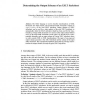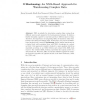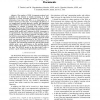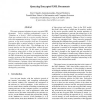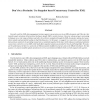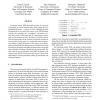ADBIS
2006
Springer
14 years 5 months ago
2006
Springer
The XSLT language is used to describe transformations of XML documents into other formats. The transformed XML documents conform to output schemas of the used XSLT stylesheet. Outp...
ADBIS
2006
Springer
14 years 5 months ago
2006
Springer
XML is suitable for structuring complex data coming from different sources and supported by heterogeneous formats. It allows a flexible formalism capable to represent and store d...
IJCNN
2006
IEEE
14 years 5 months ago
2006
IEEE
— The number of XML documents produced and available on the Internet is steadily increasing. It is thus important to devise automatic procedures to extract useful information fro...
IDEAS
2006
IEEE
14 years 5 months ago
2006
IEEE
This paper proposes techniques to query encrypted XML documents. Such a problem predominantly occurs in “Database as a Service” (DAS) architectures, where a client may outsour...
ICMCS
2006
IEEE
14 years 5 months ago
2006
IEEE
XML is a popular approach to interoperable exchange of Multimedia metadata between a wide range of devices. This paper explores extending the use of the Remote XML Exchange Protoc...
ICDE
2006
IEEE
14 years 5 months ago
2006
IEEE
Currently, only few XML data management systems support concurrent access to an XML document, and if they do, they typically apply variations of hierarchical locking to handle XML...
ICDE
2006
IEEE
14 years 5 months ago
2006
IEEE
Document-centric XML document creation is a process of marking up textual content rather than typing text in a predefined structure. It turns out that, although the final docume...
DEXAW
2006
IEEE
14 years 5 months ago
2006
IEEE
Detecting structural similarities between XML documents has been the subject of several recent work, and the proposed algorithms mostly use tree edit distance between the correspo...
WEBDB
2007
Springer
14 years 5 months ago
2007
Springer
XML information retrieval (XML-IR) systems utilize the logical structure of XML documents for retrieving relevant elements. From a practical point of view, displaying the search r...
PEPM
2007
ACM
14 years 5 months ago
2007
ACM
XML graphs have shown to be a simple and effective formalism for representing sets of XML documents in program analysis. It has evolved through a six year period with variants tai...
